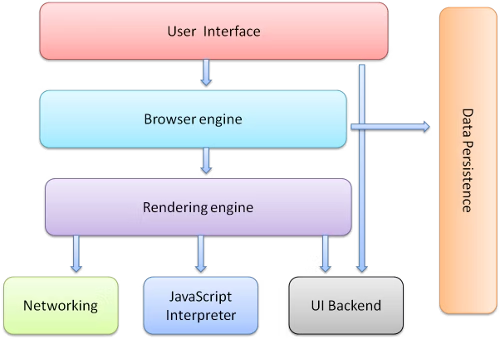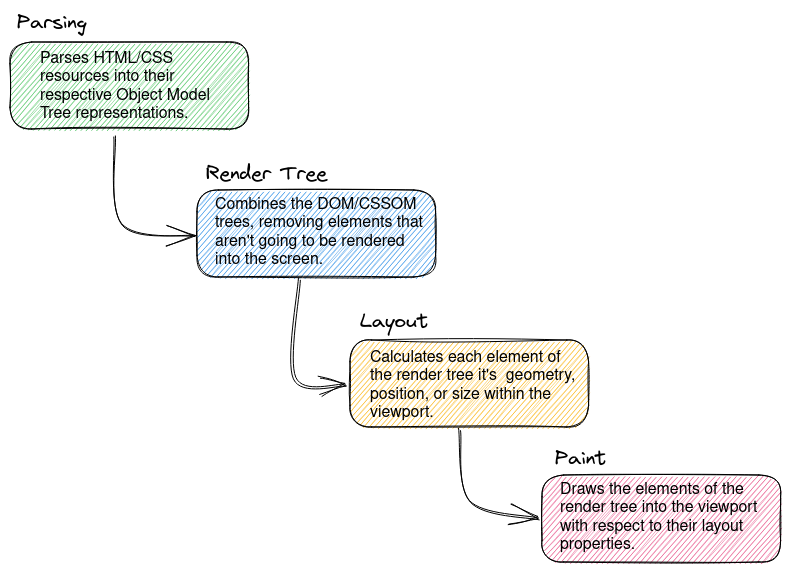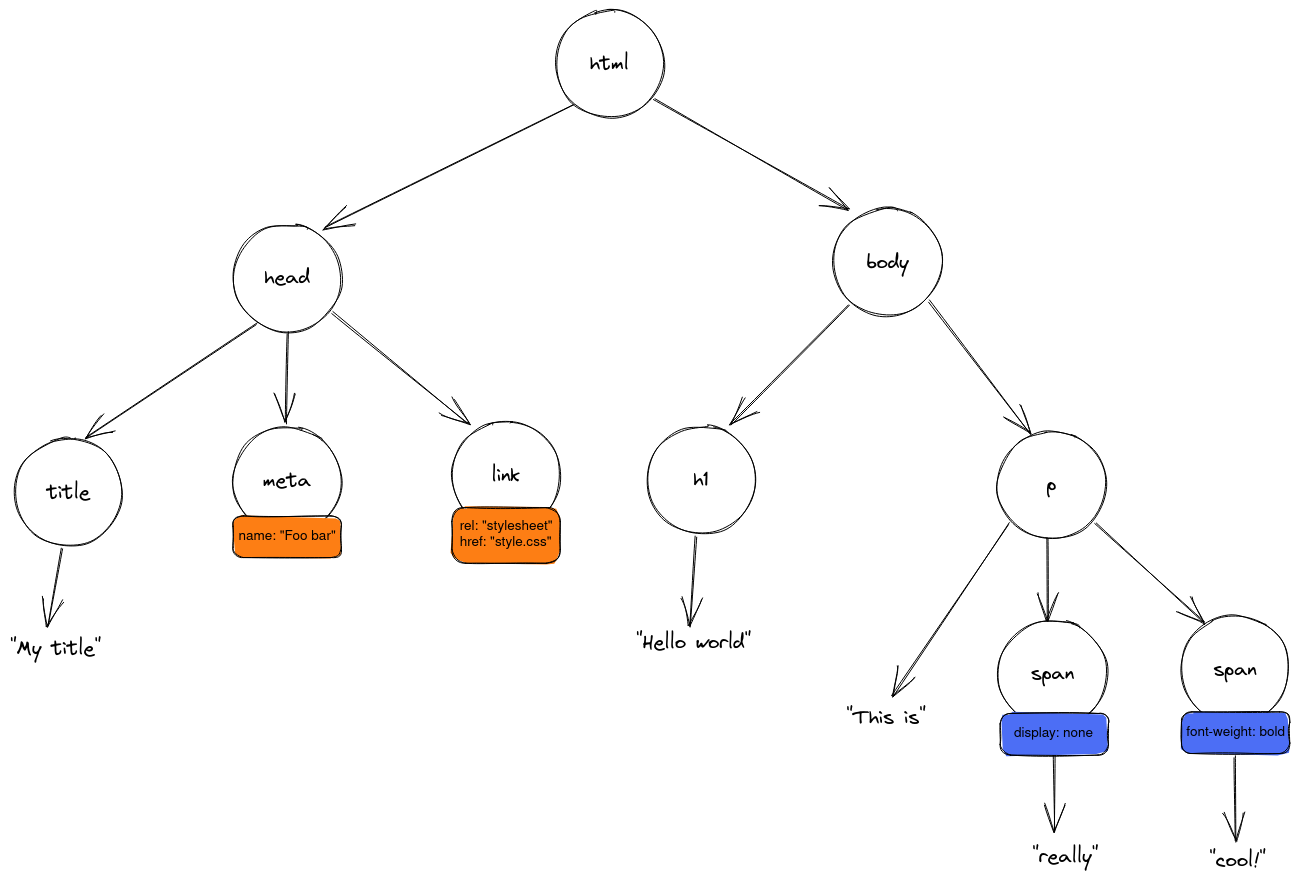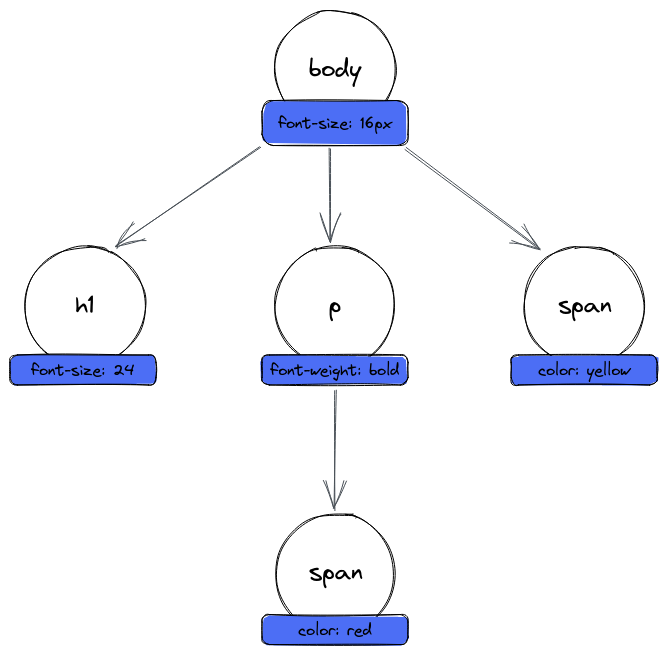Web Browser Rendering
Last Modified: 04/21/2023 00:58AM GMT+0
High-Level Components Of Web Browsers #
Browsers contain many things to do their jobs and may have more features than some depending on the implementations done by a browser vendor.
In most cases however browsers typically contain:
- User Interface: This includes the address bar, back/forward buttons, menus, etc.; any part that the user interacts with but not including the viewport page where the web resource is displayed.
- Browser Engine: Marshals actions between the UI and the rendering engine.
- Rendering Engine: Generates the necessary data structure and positioning of elements to be rendered to the viewport from a given resource (ie. HTML/CSS).
- Networking: Manages network requests from application protocols such as HTTP, FTP, etc.
- UI Backend: Used for drawing basic widgets such as combo boxes and windows and are not platform specific. It also uses OS methods/system calls.
- JavaScript Interpreter: Parses and executes JavaScript resources.
- Data Storage: The storage persistance layer.

Image is from web.dev: How browsers work
The Rendering Engine #
When a browser receives an HTML/CSS resource it usually does the ff.:
- Parsing: Parses the resource and constructs the object model trees such as the Document Object Model (DOM) tree from the HTML resource and the CSS Object Model (CSSOM) tree from the CSS resource.
- Render Tree: Once the object model trees are generated they now get combined
as the render tree which removes elements that aren't going to
be rendered in the viewport such as anything in the meta tags or
elements that contain a
display: nonecss property. - Layout: After the construction of the render tree, the calculation of each element's geometry, position, size, or layout within the viewport is made. (This is also called reflow).
- Paint: Finally, once the render tree is made and the layout for each elements are calculated, the browser then begins to paint the pixels on the screen based on the elements in the render tree with respect to each element's layout.

The Object Model Trees #
When a browser receives an HTML or CSS resource it will parse them and generate a tree data structure called the Object Model Tree.
Document Object Model (DOM) Tree #
For example, an HTML with the ff. contents:
<html>
<head>
<title>My Title</title>
<meta name="Foo bar">
<link rel="stylesheet" href="style.css">
</head>
<body>
<h1>Hello world</h1>
<p>
This is
<span style="display: none;">really</span>
<span style="font-weight: bold;">cool!</span>
</p>
</body>
</html>May get generated as the ff. DOM tree:

CSS Object Model (CSSOM) Tree #
For a given CSS stylesheet resource like the ff.:
body {
font-size: 16px;
}
span {
color: yellow;
}
p {
font-weight: bold;
}
p > span {
color: red;
}
h1 {
font-size: 24px;
}This should generate a CSSOM tree like so:

For each child node in the tree it inherits [most] style properties from its parent if not declared.
For example, all child elements of the body node in this example will get
a font-size of 16px, specifically these are the p and span elements.
The h1 element in this case however will receive a font-size of 24px since
it has a specific style rule indicating this.
Specificity #
Specificity is the algorithm browsers use to determine which style rules to apply to competing style declarations.
The algorithm uses four (4) categories, each containing either or a positive integer, all each of which are set to by default.
Values in each category are increased based on the ff.:
- Any selector that is defined in an element's
styleattribute will increase the specificity value of its first category by . - ID selectors will increase the specificity value of its second category by .
- Other selector attributes or pseudo-classes in the selector will increase the specificity value of its third category by 1.
- Element name selectors or pseudo-elements increases the specificity value of its fourth category by 1.
For example:
/** 0-0-0-1 */
p {}
/** 0-0-1-0 */
[name="foo"] {}
/** 0-0-1-0 */
.bar {}
/** 0-1-0-0 */
#thing {}
/** 0-1-1-0 */
#thing.foo {}
/** 0-1-1-1 */
p#thing.foo {}The algorithm selects the declaration based on the category with the highest value from first to fourth category.
So for example:
/** 0-0-3-0 */
p.foo.foo.foo {
color: red;
}
/** 0-1-0-0 */
p#bar {
color: blue;
}<p id="bar" class="foo">hello</p>Here, the p element will get a blue color since p#bar has higher category precedence
than p.foo.foo.foo even though the latter contains a specificity value of for its
category.
For more information on specificity please see:
Render Tree #
Once the DOM and CSSOM trees have been generated, the render tree can now be constructed.
This process involves determining all visible DOM nodes and also calculating the style properties of each visible DOM node.
For example, DOM nodes that have a style property of display: none will be removed from
the render tree construction while DOM nodes that contain visible: hidden will still
be added to the render tree.
This is simply because display: none indicates the removal of the DOM node while visible: hidden
only indicates the opacity of the DOM node.
Layout #
Once the render tree is constructed, the layout or final position of each node within this tree is calculated in relation to the viewport and all other nodes within the tree.
Paint #
Finally, once the DOM, CSSOM, render tree, and layout have been constructed and calculated, the elements are now drawn into the viewport.